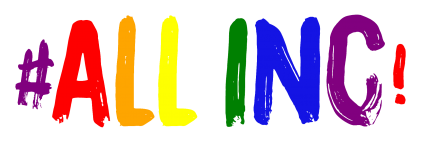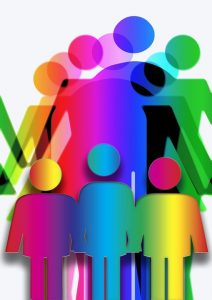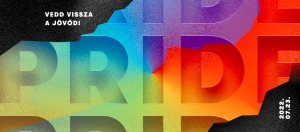For a queer school
In this post, ES2’s Nuria reflects on ideas inspired by the book Pedagogías queer (Queer Pedagogies), by Mercedes Sánchez Sáinz. (Find links to this book, and to other references mentioned in the post, at the foot of this page.)
All educational practice is political. There is no neutrality possible in the task of teaching. That is why I am so struck by the discourses, coming mostly from the far right, that attack and try to exclude from school so-called “gender ideology”; claiming to “safeguard” children, they aim for the school to build the “normal” individual, comfortably and fully adapted to the system. The far right has taken up the hatchet to defend their traditional model of family, and that requires a school that builds heterosexual and gender-normative children. They defend the construction of a type of person that does not deviate from the heterosexual norm where privilege resides. It is not really about defending people but about defending the sexual and gender norms that society imposes. We all know, in our schools there are people (at all levels of the educational community) who do not follow this imposed norm and numerous and varied types of families; there are multiple childhoods, adolescences and youths in our schools, and not only by virtue of sex and gender, but also by virtue of ethnicity, race, religion, different abilities, and so on.
I ask myself with philosopher Paul B. Preciado: who protects those who are different? Who makes them visible, who names them, who gives them the capacity for agency? Who gives them recognition and therefore the right to be and to exist?
We need to transform the school such that it will make it possible for all its members to live with dignity, which is why it is necessary to put into practice a queer pedagogy that doesn’t shy from working with uncertainty and heterogeneity, and that accepts the formation process of sexual and gender identity as something open and in constant development (hence the name “queer”).
It is necessary to seek, imagine and build an educational institution that is more focused and careful with the singularity of the students than with perpetuating the norm.
To this end, I propose a series of practices that, as educators committed to this change, it would be a good idea for us to follow:
We must be aware that we are all others, that hegemonic values do not represent everyone, and that making them universal generates violence and pain in many people who do not recognize themselves in them.
- Question which bodies are privileged in our schools and which are not, in order to try, by identifying them, to get rid of these privileges. To develop a critical sense that allows us to see these privileges.
- Train ourselves, as teachers, in these issues.
- Review the curricula that author Valeria Flores describes as logo-phallo-ethno-adult-centric. Include in them, in the materials we use or the books we read, diverse references in terms of families, orientations, origins, etc.
- Consider that identities are not immovable.
- Make differences known as contributing to the richness of human diversity. Question the vision of diversity as otherness (we are all different!). Make visible different bodies, capacities, cultures, and orientations of desire.
- Question the media, politics, religions, medicine, psychology, family mandates, clothes shops, schools.
- Make sure there are toilets for all genders.
- Prevent dress codes, whether explicit or in the school’s hidden curriculum. Encourage the idea that clothes have no sex or gender and that we are free to dress as we please.
- Avoid assuming cisheterosexuality by default: in questionnaires, when it is not necessary, avoid asking about sex and when it is necessary, include other options such as “non-binary”, “prefer not to say” or “not clear to me”; or “name of the people in charge of your care” (instead of just “parents”, thus welcoming other types of family).
- Analyse the androcentric and heterocentric bias of all cultural productions (music, visual arts and media, biology); also in the vision of history. Make all varieties of bodies visible.
- Use language that does not exclude.
- Always respond to prejudiced, phobic or insulting comments. Act not only when the school’s harassment protocol is activated, but also do preventive work to avoid any type of discrimination.
- Recognise all the realities of our classrooms and speak for all of them.
- And finally, always be open to imagination, innovative teaching practices and listening attentively to our students, from whom we continue to learn year after year.
We must be aware that we are all others, that hegemonic values do not represent everyone, and that making them universal generates violence and pain in many people who do not recognize themselves in them.
Pedagogías queer: link to publisher’s website · Link to recent book by Paul B. Preciado (in Spanish; English translation) · Article by Valeria Flores: link to journal’s website.
¡Gracias al equipo ES2 (Nuria, Elena, Loren y Ángeles)!







